The use of abandonware in computer graphics

Foreword
For this experiment, I was pushed back by the controversy about the Adobe alternative that flared up on the design forums (mainly caused by the price increase of subscription, of course). Alternatives such as Affinity, Sketch, and, of course, Open Source products have long gone out of the stage of raw beta and have become quite usable, but how far are they from before the market leader?
As for the Adobe package itself, of course, since the time of the first Creative Studio, it has become much more convenient in working with web design, interface design, digital publishing, integration with online services has improved significantly. But in the industry of "conservative" graphic design: photo processing, printing layout and prepress preparation of changes is not so much. And to work in these areas is enough and the basic set of functions, which was formed in the first CS.
So can old commercial software compete with Photoshop’s modern killers?
To answer this question, I propose to return to eleven years ago and recreate the workplace of the designer from the very beginning of the zero. As I remember, in many studios in my city there were not the freshest, but regularly working poppies with Mac OS 9. OS X was then considered buggy and damp.
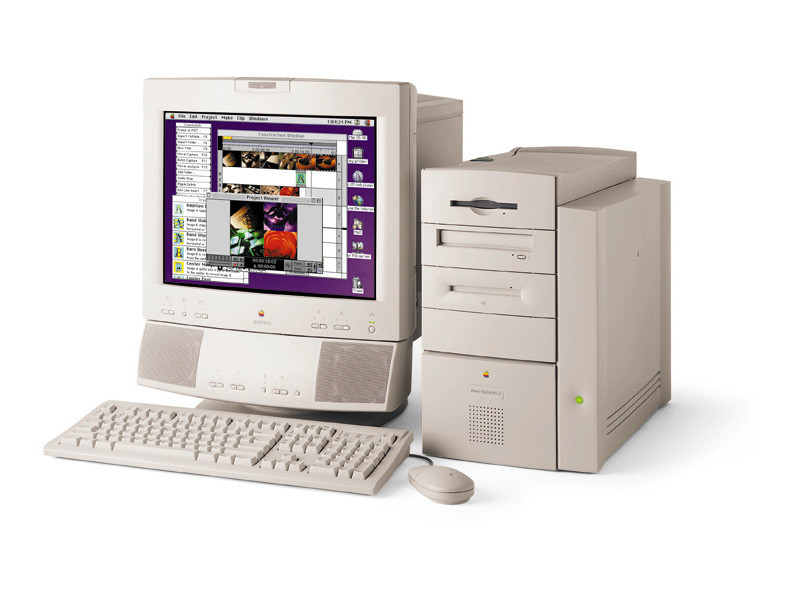 .
.
Under the classic Mac OS, a huge amount of software for working with graphics, 3D, sound and other multimedia was released in its time. Today, this wealth is available for download on dozens of sites such as Macintoshgarden.org , Macintoshrepository.org and others. So, getting and rolling abandoned software is not a problem at all ∗.
∗ Of course, the use of commercial software, albeit twenty years ago, is not legal. But the right holders, de facto, this has long been scored. And, in contrast to the torrent trackers with fresh releases, nobody closes the archives of the abandoned software. The lawyer's salary is clearly higher than the benefits of their prosecution.
Designed then and under Windows, but, believe, over installation and setup of the test environment with it would have to sweat.
As a workstation, I use my old iBook G3, which served me in the early 2000s. The OS X 10 Tiger installed on it became more and more thoughtful with each update, and 10.4.11 was already godlessly slowing down. Therefore, I boldly format the disk, put Mac OS 9.2.2 and a pack of necessary software there. Download, by the way, had a half gig!
There were no problems with the installation. The axis and all the software installed in a couple of clicks. A G3 / 900 and 256 MB for comfortable work, even beyond measure - the speed and responsiveness is no worse than that of a fresh MacBook.
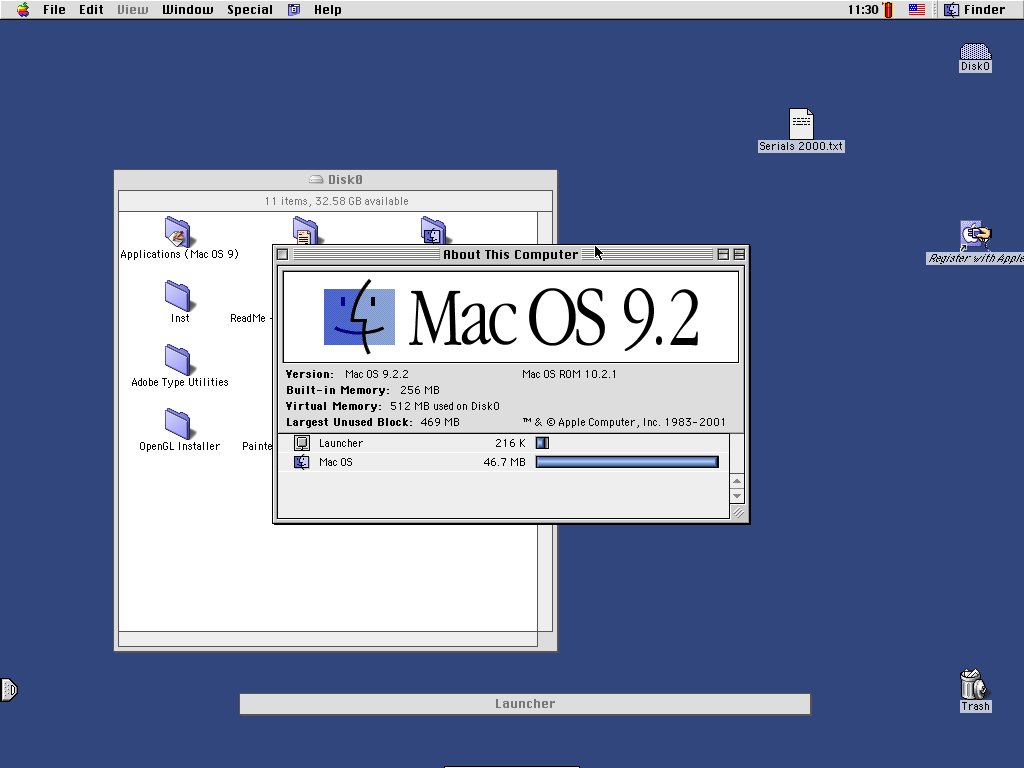
So, let's try to work with 3D. My choice fell on Infini-D version 4.5 (1998). This is a very simple and intuitive editor that allows you to quickly assemble the scene (from shit and sticks) and visualize it with a built-in raytracer (VRay, no, you have not heard). Now, after many resales and acquisitions, it has become Carrara and DAZ 3D is released.
I made a simple scene of splines, materials without textures, but with displacements and reflections to load the system a bit.
For the test, enough render 640 × 400 × 8. I do not see restrictions to make and Full HD. But then the process would take hours, not minutes.
It took me about 20 minutes to assemble the scene and actually render a six-second animation.
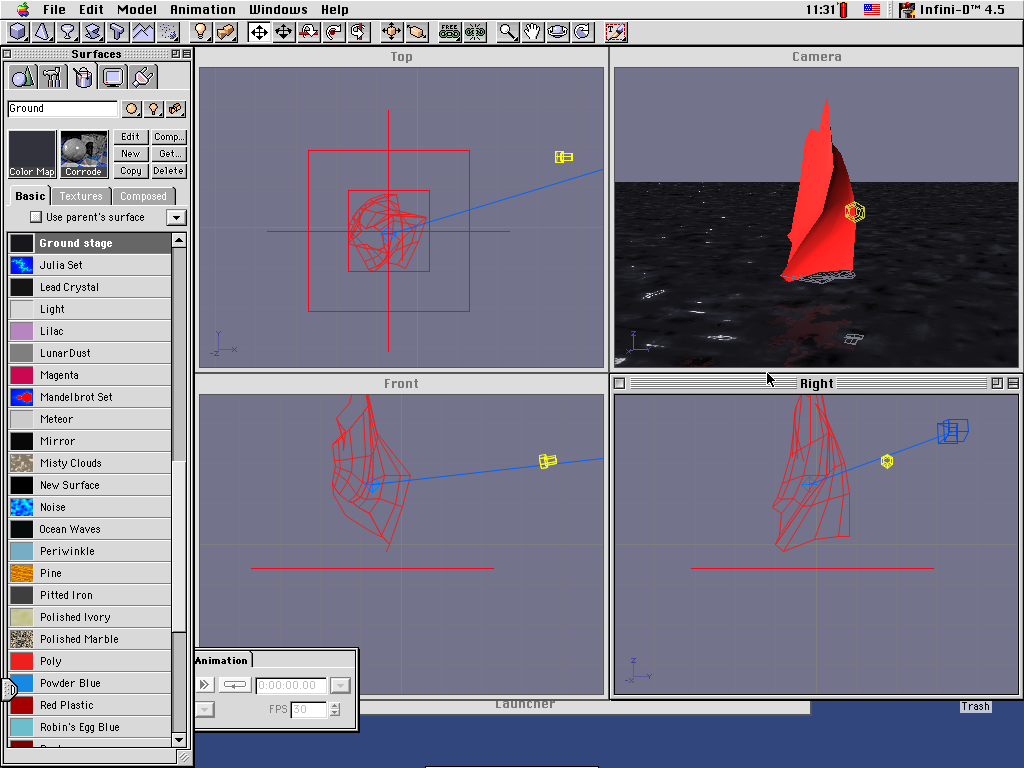
On top, I really wanted to throw some overlay effect. For this, I talk to Photoshop. The seventh version in terms of usability is not much inferior to the modern CC. Shapes and masks - in place; layers are grouped. And for work 64 MB of RAM are enough.
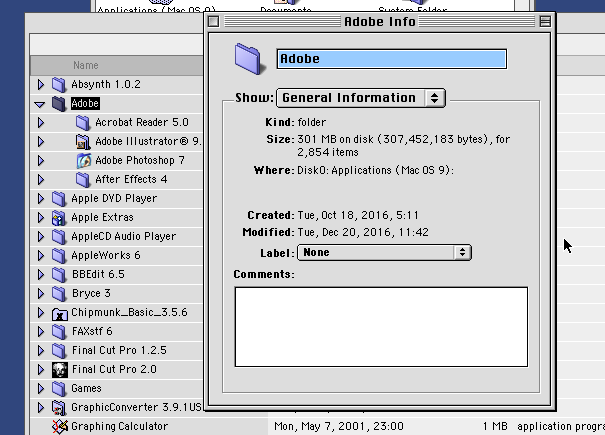
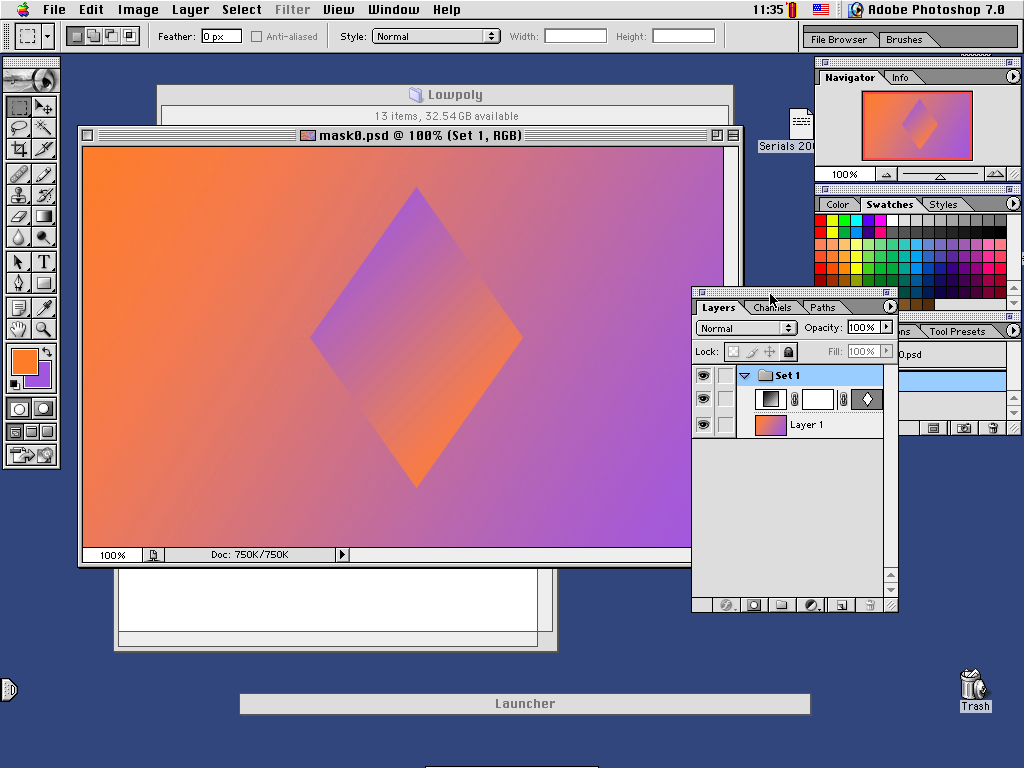
For compositing, I had to use Final Cut Pro 4.0 of 2003 release. After Effects refused to run on 256 megabytes of RAM, but Final Cut fit perfectly in 100. It took less than a minute to render the MOV file at 640 × 400 × 16.

And here is the result that I had to convert into an animated gif, because I didn’t have to prepare a looped video for publication on the web from classic Mac OS.

findings
It took about half an hour for all the work, not counting the OS installation and software. I don’t think that on a modern computer it would take less time to make a similar video. But the “downshift” from Adobe CC to CS or an earlier version will cause the modern graphic designer clearly less resentment than the transition from Photoshop to Gimp. In the comments you can convince me.
What is it like sitting under Mac OS 9 in 2017?
In general, it's nice!
The interface is very responsive and fast. Everyone's favorite Dock is installed by a third-party extension. Of the minuses: the Finder is very lacking in sidebars with bookmarks.
Flash drives in FAT or HFS + are mounted without problems.
Comp sees the guest AFP balls with MacOS Sierra and easily comes to them as a guest. But when you try to log in as a user, AppleShare begins to swear on inappropriate encryption methods.
The second monitor connects, but works in Mirror mode. However, this is an artificial iBook restriction made to support PowerBook sales. It is possible to bypass it only by picking at NVRAM, specific for each video chip series with a good chance to turn a computer into a brick. The network has posts about it .
You can connect to Wifi with WEP. WPA is no longer working, although it may be because of the old Airport.

Even the latest Classilla is terribly slow. Encrypted connections constantly generate errors, despite the SSL 2 and 3 support. And considering that even a simple static site is now hung with javascripts, which are also loaded from the CDN via https, I will say that there is no Web on Mac OS, what to eat I will assume that due to SSL you will not be able to work with e-mail.
But other application software just flies; for 2 hours of experiments, the cooler never turned on, even when rendering.
The biggest disadvantage for the designer is that a graphics tablet younger than Wacom Graphire 1.0 cannot be connected: there are no drivers. The same applies to modern printers.
Conclusion
If you are going to open an express-printing salon somewhere in an African village, a working comp with classic Mac OS will work fine there for more than one year.
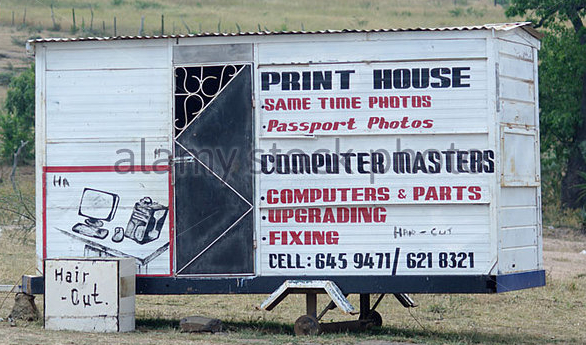
PS Do not pay attention to the time in the screenshots. I made them after the completion of the work
UPD. I came across an English-language material on a similar topic: why people still use Mac OS 9. An OS 9 Odyssey
')
Source: https://habr.com/ru/post/400871/
All Articles